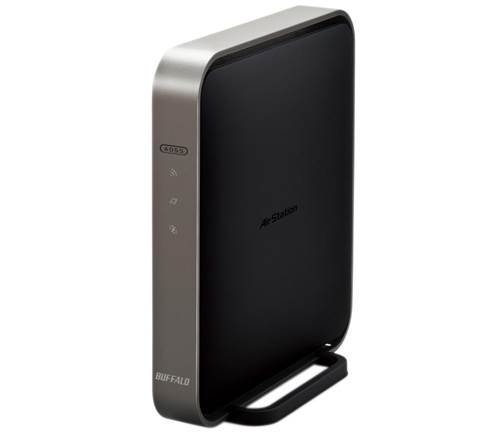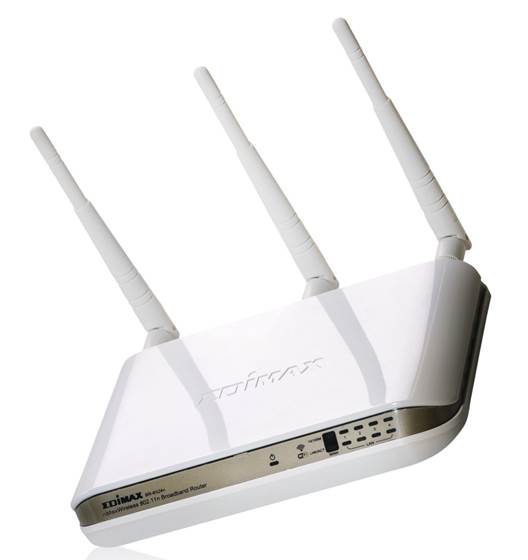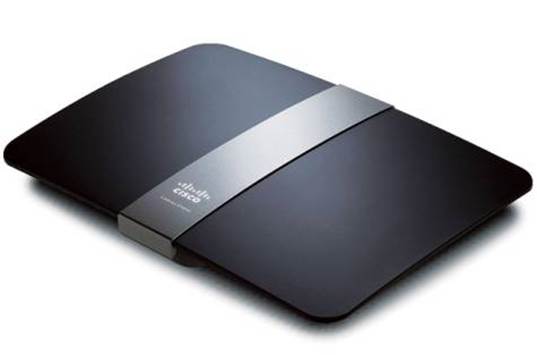There are currently three wireless
standards that you can expect to encounter in the market: wireless G, wireless
N and (just starting to creep into the top-end) wireless AC.
These standards are all different
iterations of the Wi-Fi (802.11) standard. They aren’t strictly compatible with
one another, but any modern Wi-Fi device will be capable of running the oldest
and slowest of the three standards (wireless G), so there’s no real need to
worry about compatibility in that sense.
“It’s unlikely that you’d place your router
near your microwave oven, but don’t do it anyway”
Do be aware, however, that network
connections will only run at the speed of the slowest device. If you buy a wireless
N router, you also need to have a network adaptor that’s compatible with
wireless N to get the most out of it, otherwise the connection will roll back
to using wireless G. Still, you can buy a wireless N router in anticipation of
upgrading your wireless adaptors in the future, and newer devices like
smartphones already support wireless N, so do give it some serious
consideration.

Buffalo
AirStation 1750
Without getting too deeply into the nuts
and bolts of wireless standards, you should also cast an eye over the bandwidth
support of a router. Wireless N can run on two different bandwidths - 2.4GHz or
5GHz – both of which have their own strengths and weaknesses. You can get
single-band wireless N routers, but dual-band devices support both, giving better
performance and speed because of it.
Don’t confuse the presence of dual antennas
with support for dual-band. More aerials means a router’s signal strength and
capacity will be better, but it doesn’t mean that one is used for 2.4GHz and
one is used for 5GHz. In fact, the best routers on the market have as many as
four antennas. We should point out that despite the advantages, multiple
aerials isn’t an quality worth paying for unless you’re planning to connect a
large number of devices (i.e. more than 32) or have reason to expect problems
with interference.
Beyond entry-level devices, you should look
for media-streaming features and advanced security. Some routers have built-in
storage, others give you the ability to attach external storage over USB. If a router
has this capability, check whether it also has the software allowing it to
stream over the web. Such features let you to log into your own router from any
internet-enabled machine and access files stored on the attached disk. It’s an
incredibly useful feature, especially if your smartphone lacks memory card
support or your laptop only has a small hard drive.

Edimax
BR-6524N
Is Now The Right Time To Buy?
It depends on what sort of unit you’re
aiming for. If your plan is to buy a high-end, top-of-the-range model so that
you can get the fastest speeds on offer, then now might not be the right time
for it.
That’s because the latest Wi-Fi standard
(802.11ac) is on the cusp of coming to market in earnest. If you’re planning to
upgrade to a top-end model, anything you buy now could be significantly out of
date in as little as a year. Even those routers that already have 802.11ac
support will behind the times, because the standard hasn’t yet been locked
down.
“Beyond entry-level devices, you should
look for media-streaming features and advanced security”
At the very least, any 802.11ac router you
buy today will probably need a firmware update to be brought into line when the
standard launches properly. At worst, they may be missing some features or
compatibility, and they’ll definitely lose most of their value. Even if you buy
one today, there are no network cards that support the protocol, so you can’t
use the faster speeds yet. For this particular situation, at least, the advice
is clear: don’t buy a high-end router right now if you can at all avoid it.
On the other hand, if you’re just looking
for a low-to-mid-range wired, 802.11g or 802.11n class device, there’s little
reason to worry about obsolesce or price drops. 802.11g, in particular, has
endured well beyond the appearance of its successor and will probably be around
for ages. The release of 802.11ac devices might be what finally edges 802.11g
into the bin, but it’ll still be a significant while longer before most
households are running anything faster.
What Are The Technical Constraints?
The only real technical concern you should
have when choosing a router is that your wireless adaptors are all compatible
with whatever the access point’s minimum standard is. You only really need to
be careful if your network adaptor is 802.11a, though - wireless G networks
don’t support wireless A adaptors (although wireless N and AC networks do), but
if you have a card that old, it’s probably time to replace it anyway (if only
for the speed boost).

The real technical constraints on routers
involve checking that the operational requirements can be met. Routers need to
be powered from the mains, and have an internet connection to share coming from
either their internal modem or an external one - so don’t plan to place it on
the opposite side of the house to your phone sockets.
What’s The Alternative?
If you don’t want to buy a separate
wireless router, there is another possibility: set your computer up as a router
instead.
The benefits of doing this are clear: you
don’t have to pay to buy and run a router, and you don’t have to lose a plug
socket and associated space to the device itself. The big drawback, however, is
that you’ll need to have the routing PC switched on even if you want to access
the internet from another device. You’ll also lose a portion of resources to
managing the connections, but this is only likely to be a concern if you’re a
gaming enthusiast, as most machines can handle the load in the background.
Although it’s slightly more complicated
than just buying a router, it can also be a good way to recycle hardware, too.
If you have a spare PC handy, you could set it up as a fileserver, so running
it as a router as well might actually save you abandoning perfectly good
hardware in the back of a cupboard.
To turn your PC into a wireless router, it
needs to have a wireless card installed. All you have to do is connect your
modem to it (which is normally done using a network cable or USB connector) and
then (on Windows PCs at least) you can enable the routing functionality using a
simple wizard in the control panel’s Network options. Just remember to enable
wireless security!
You also need to make sure that there isn’t
any interference. Walls, doors and floors can all block Wi-Fi signals, and the
average range of a wireless device isn’t much longer than ten meters, so make
sure your router is positioned as close to the devices that connect to it as
possible. You should also take care to minimize electro-magnetic interference.
It’s unlikely that you’d place your router near your microwave oven, but don’t
do it anyway; they use the same frequencies and the more powerful microwave
would disrupt your wireless connection whenever you try to make lunch. The same
logic applies to other routers. If there are a lot of wireless networks in your
area, it might make sense to change the channel that your router works on. All
wireless bands are divided into channels, so if you’re experiencing
interference from another router, try to choose a channel at least four higher
than the one it’s running on for optimal performance (the channels overlap).
If you’re really in a bind, you can also
try swapping the included antenna for a directional one, but only consider that
as a last resort if you’re having severe problems with connection range and
interference.